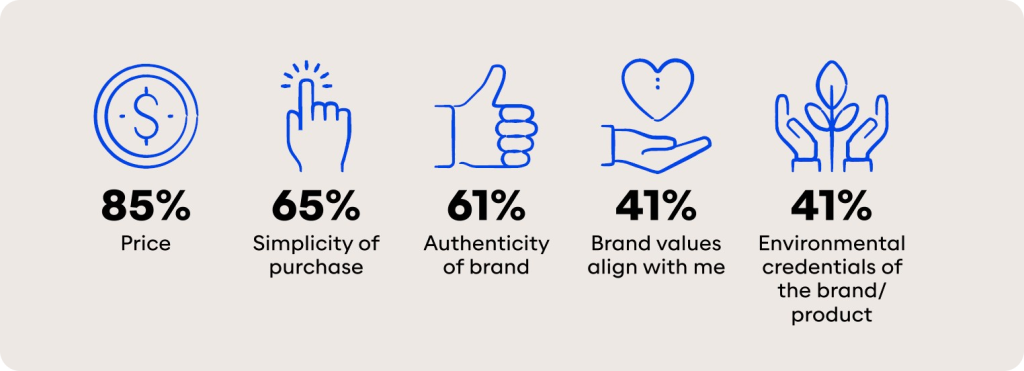By: Mark McCrindle
The rise of virtuous consumerism highlights the growing concern for the future of our planet and the need for sustainable practices.
This trend is a new expression of the existing focus on supply chains and the production of goods and services. Consumers are becoming increasingly informed about the ways businesses operate and the impact they have on the environment and society.
25 years ago, the concept of the triple bottom line was introduced, emphasising that businesses should prioritise more than just profit, but also consider the impact on people and the planet. This shift in priorities is now being reflected in consumer behaviour, with a growing number of consumers willing to purchase from organisations that prioritise transparency and sustainability.

When it comes to a buying experience, although price is still the most important aspect (85% said it was extremely/very important), this is followed by the simplicity of the purchase (65%), the authenticity of the brand (61%) and that the brand values align with personal values (41%). Two in five (41%) said the environmental credentials of the brand/product were extremely/very important. This increases to more than half (56%) among Generation Z.
The rise of virtuous consumerism has led to an increased focus on avoiding “greenwashing,” where companies make false claims about their sustainability practices.
As consumers continue to make more informed and conscious decisions, companies will want to consider adapting to and prioritising sustainable practices. Ultimately, the rise of virtuous consumerism is a sign that people are more concerned about the impact of their purchases and are willing to take action that aligns with this.

Trends of 2023 infographic
In this handy infographic, you’ll discover the trends that will shape businesses, teams and communities, and how you can find opportunities in the change.
Article supplied with thanks to McCrindle.
About the Author: McCrindle are a team of researchers and communications specialists who discover insights, and tell the story of Australians – what we do, and who we are.
Feature image: Photo by CardMapr.nl on Unsplash
